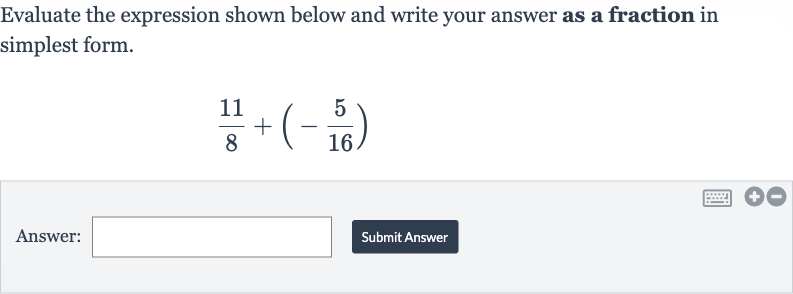AI tutor
Welcome to Bytelearn!
Let’s check out your problem:

Evaluate the expression shown below and write your answer as a fraction in simplest form.Answer:Submit Answer
Full solution
Q. Evaluate the expression shown below and write your answer as a fraction in simplest form.Answer:Submit Answer
- Identify LCD: Identify the Least Common Denominator (LCD) for the fractions and . The denominators are and . The LCD for these two numbers is because is the smallest number that both and can divide into without leaving a remainder.
- Convert to LCD: Convert the fraction to have the denominator of . To do this, multiply both the numerator and the denominator of by .
- Add fractions: Now that both fractions have the same denominator, add them together.
- Perform subtraction: Perform the subtraction in the numerator. So, the combined fraction is .
- Check for simplification: Check if the fraction can be simplified.Since is a prime number and is not a multiple of , the fraction is already in its simplest form.
More problems from Multiplication with rational exponents
QuestionGet tutor help
QuestionGet tutor help
QuestionGet tutor help
QuestionGet tutor help
QuestionGet tutor help
